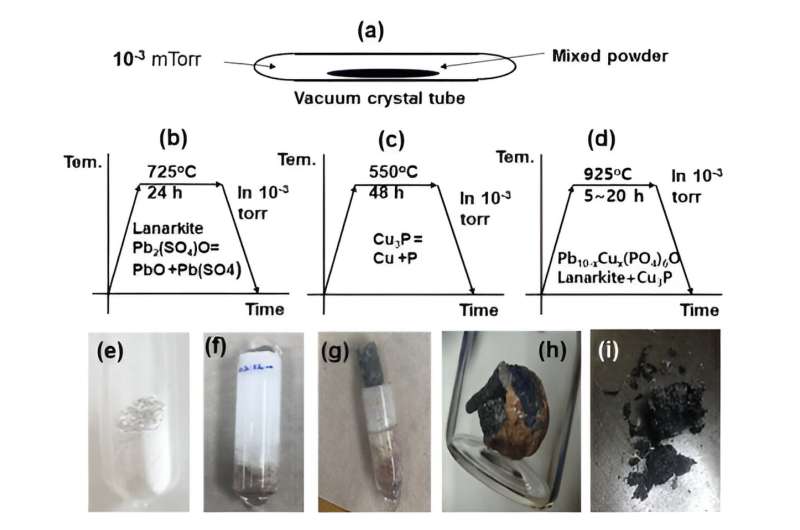July 27, 2023 report
This article has been reviewed according to Science X's editorial process and policies. Editors have highlighted the following attributes while ensuring the content's credibility:
fact-checked
preprint
trusted source
proofread
Korean team claims to have created the first room-temperature, ambient-pressure superconductor

A team of physicists affiliated with several institutions in South Korea is claiming to have created the elusive room-temperature/ambient-pressure superconducting material. Their work has not yet been peer reviewed. They have posted two papers on the arXiv preprint server.
Scientists around the world have been trying for more than a century to find a type of material that would conduct electricity without resistance—discovery of such a material would revolutionize the electricity business because it would mean that electricity would no longer be lost to heat dissipation as it moves along power lines. It would also revolutionize the electronics business because engineers would no longer have to worry about heat dissipation causing problems in devices.
In their two papers, the research team describes the new material, which they call LK-99, and how it was created. It was made, they report, by a solid-state reaction between lanarkite (Pb2SO5) and copper phosphide (Cu3P). The reaction, they claim, transformed the mixture into a dark gray, superconductive material.
In their papers, the team claims to have measured samples of LK-99 as electricity was applied and found its sensitivity fell to near zero. They also claim that in testing its magnetism, it exhibited the Meissner effect—another test of superconductivity. In such a test, a sample should levitate when placed on a magnet. The team has provided a video of the material partially levitating. They claim that the levitation was only partial because of impurities in their material.
The papers by the research team have generated much excitement and skepticism in the science community. There have been other instances of researchers claiming to have found room-temperature/ambient-pressure superconductors over the past several years—all have failed to live up to their claims. The researchers on this new effort have responded to such skepticism by suggesting that others repeat their efforts to test their findings.
If their claims turn out to be true, the team in Korea will have made one of the biggest breakthroughs in physics history, no doubt leading to revolutionary changes in electronics and certainly Nobel medals for all those involved.
More information: Sukbae Lee et al, The First Room-Temperature Ambient-Pressure Superconductor, arXiv (2023). DOI: 10.48550/arxiv.2307.12008
Sukbae Lee et al, Superconductor Pb10-xCux(PO4)6O showing levitation at room temperature and atmospheric pressure and mechanism, arXiv (2023). DOI: 10.48550/arxiv.2307.12037
Journal information: arXiv
© 2023 Science X Network





















